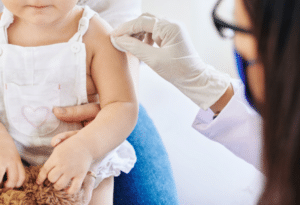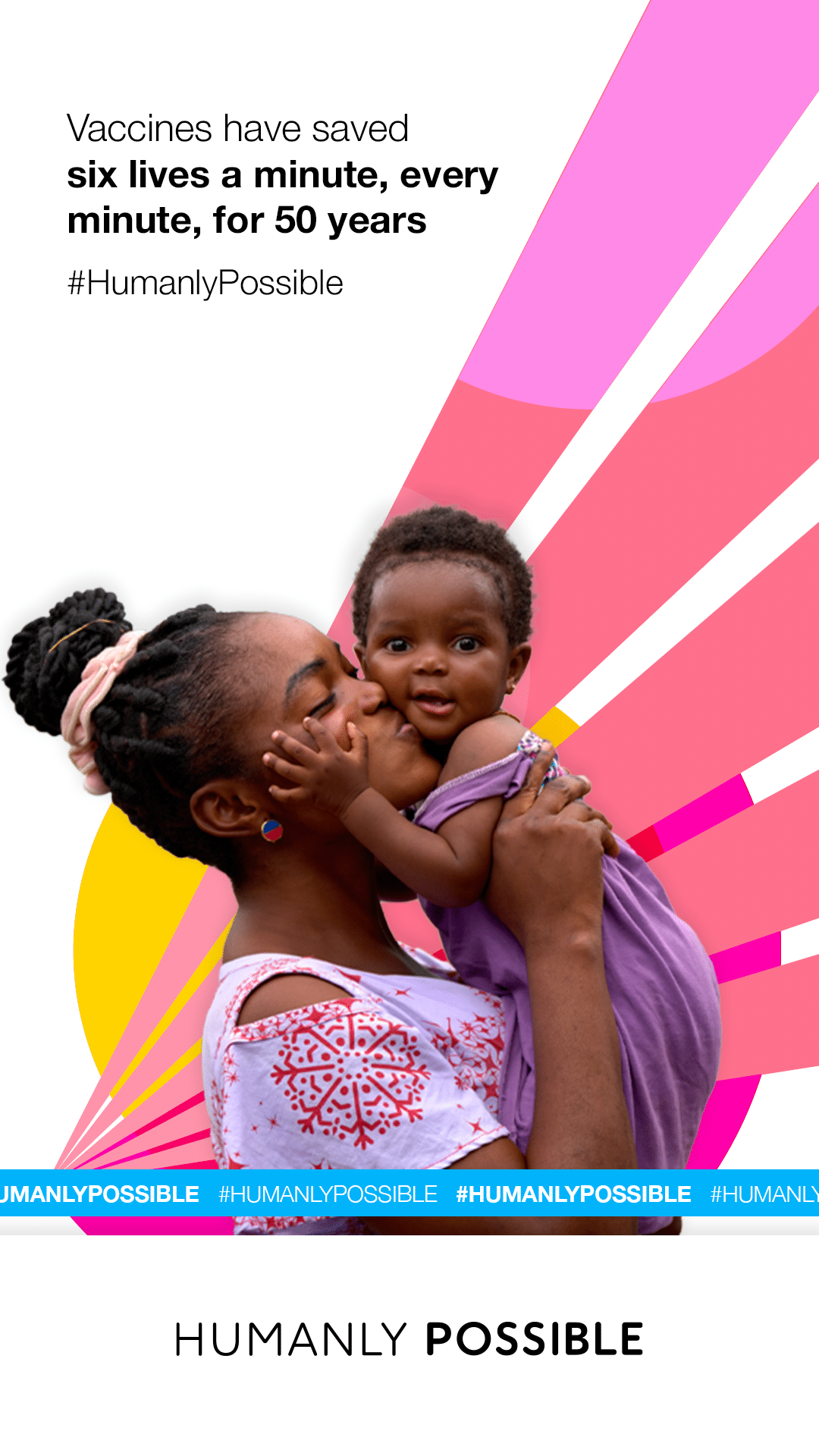
At River Bend Medical Associates, we believe in preventative medicine. Preventative medicine is the understanding that many serious diseases can be avoided entirely if their causes are addressed long in advance.
Preventative medicine typically includes tools in order to attack problems from multiple angles: recommending lifestyle choices, encouraging annual physicals, scheduling screenings for certain diseases that tend to arise at certain times (e.g. breast cancer, colon cancer), and so on.
This leads us to one of the most powerful tools that preventative medicine has: vaccines.
A History of Vaccines
For centuries, societies in Europe and Asia were repeatedly devastated by a disease called “smallpox.” Smallpox was a common and extremely serious disease that caused a severe skin rash and pustules (“pox”). While many people survived it, bearing the scars left by the pox, smallpox killed many of the people who contracted it.
At the time, the best tool they had for preventing smallpox was “variolation,” in which people were intentionally exposed to the scabs of smallpox sufferers.
In the 1760s, an English doctor named Edward Jenner noticed that English dairy workers, who were commonly exposed to a mild bovine illness known as cowpox (which would cause a minor outbreak on the skin, and then clear up) never seemed to develop smallpox. This led Jenner to wonder, what if cowpox was similar enough to smallpox that it made the immune system resistant to both diseases?
In 1796, he gathered pus from a dairy worker infected with smallpox, and used it to variolate an 8 year old boy against cowpox. Six weeks later he exposed the boy to smallpox. The boy didn’t catch smallpox. Further experiments led Jenner to conclude that cowpox exposure could inoculate people against smallpox, without the risk of death associated with traditional smallpox variation.
Jenner’s experiment created the very first vaccine.
Today’s vaccines are incredibly safe.
Thanks to vaccines, hundreds of millions of lives have been saved since that day in 1796 when Jenner started his experiment.
However, many early vaccines would be considered incredibly unsafe by today’s standards. Early vaccines had a high rate of infection, in which those being treated would develop the diseases they were being inoculated against. Sometimes, these people died.
This pushed researchers to develop and refine ever safer vaccines. The vaccines commonly given today have very low rates of serious complications. In the last 50 years alone, essential vaccines have saved at least 154 million lives worldwide. That’s 6 lives a minute, every day, for five decades.
Vaccines do NOT cause autism.
We know that vaccines are controversial for many people, due to fears of autism.
This is due to an old study published in 1998 in The Lancet by the researcher Dr. Andrew Wakefield. The study claimed that 8 children he studied had developed autism due to being treated with the MMR (measles, mumps, and rubella) vaccine.
Wakefield’s study created a firestorm of controversy. But as researchers looked into Wakefield’s work, it became clear that his research didn’t add up. Countless large studies* in the years that followed demonstrated conclusively that Wakefield’s allegation about a link between vaccines and autism was false. In 2004, the editor of The Lancet stated that Wakefield’s paper was “fatally flawed,” and should not have been published. Shortly after, 10 of the Wakefield’s 12 coauthors published a retraction.
Wakefield’s wrongdoing was extremely serious. Eventually, the United Kingdom revoked his license to practice medicine in 2010.
The last 25 years of research data* is extremely clear: vaccines do not cause autism.
*The Children’s Hospital of Philadelphia has an extensive reference section if you want to read more about subsequent studies.
Measles and the MMR Vaccine
Measles is a very contagious viral disease. As of March 20th, 2025, The Centers for Disease Control and Prevention (CDC) has reported 378 confirmed measles cases in the United States, far surpassing the 285 confirmed cases reported for all of 2024. Multiple measles cases have already been confirmed in California this year. Measles spreads when someone infected speaks, coughs, sneezes or breathes. It can linger in the air up to 2 hours after the infected person has left.
Measles symptoms begin roughly 7-14 days after exposure with a fever that lasts a couple of days and is often followed by a cough, runny nose, pink eye (conjunctivitis), and a rash. The rash usually appears on the face first, along the hairline and behind the ears. Then it continues to affect the rest of the body. Those infected can spread measles from about four days before their rash starts to about four days after the rash presents itself.
While measles was once considered eradicated in the U.S., new outbreaks within the country and world remind us how important vaccines are. Unvaccinated people are at high risk. Approximately 90% of people who are unvaccinated and exposed to measles WILL contract the disease.
The measles-mumps-rubella (MMR) vaccine provides the best protection against disease and serious illness. Two doses provide 97% protection against measles.
- CDC recommends two doses of measles-containing vaccine routinely for children, starting with the first dose at age 12 through 15 months and the second dose at age 4 through 6 years before school entry. This can be administered as MMR or MMRV vaccine. Children can receive the second dose of MMR vaccine earlier than 4 through 6 years, as long as it is at least 28 days after the first dose. A second dose of MMRV vaccine can be given 3 months after the first dose up to 12 years of age.
- Adults should also be up to date on MMR vaccinations with either 1 or 2 doses (depending on risk factors) unless they have other presumptive evidence of immunity to measles, mumps, and rubella.
- Measles is still widespread in many parts of the world, including Europe, Africa and Asia, making immunization especially important for travelers. All California cases have so far been linked to international travel, reflecting a global rise in measles cases worldwide. For this reason, infants under 12 months old that will be included in international travel, 1 does of MMR vaccine is recommended.
HPV, or Human Papillomavirus

HPV, or human papillomavirus, is the most commonly transmitted sexual infection in the United States. HPV is a different virus than HIV and HSV (herpes). It is estimated that more than 42 million Americans have already contracted HPV with 13 million new cases added each year.
HPV is not transmitted through bodily fluids, but rather through skin to skin contact. Symptoms of HPV infection may be mild. Some people develop genital warts that may or may not go away over time. While most people don’t develop any symptoms, they still have the virus, and remain infected for the rest of their lives.
The problem is that about a dozen types of HPV cause cancer. A study in 2002 found that HPV accounted for slightly more than 5% of all the world’s new cancer cases, making it the single greatest infectious cause of cancer. The CDC believes that about 38,000 American men and women develop cancer due to HPV exposure every year. Cancer can develop many years or even decades after contracting the HPV virus.
HPV can cause cancer in a wide variety of body parts, including the vulva, cervix, penis, mouth, throat, and anus. The evidence suggests that women are roughly twice as likely as men to develop HPV. Nearly every instance of cervical cancer has been found to be caused by HPV. But roughly 10,000 men every year develop HPV-related cancer as well.
You can lower your childrens’ chances of getting HPV and avoiding the health problems it can cause them.
We, and the CDC, strongly recommend that all children receive the HPV vaccine at 11 or 12 years old, although the vaccine can be given as early as 9. The vaccine works best when it’s given before there is any exposure to HPV. Young adults over 26 who have not been adequately vaccinated should have a discussion with their physician to determine if they could still benefit from the HPV vaccination.
CDC HPV Vaccine Guidelines
HPV vaccination can prevent over 90% of cancers caused by HPV and numerous studies have shown that the HPV vaccine is nearly 100% effective in protecting against the most common form of HPV-related cancer, cervical cancer.
But for the vaccine to have the best chance to work, it has to be given early.
Meningitis
Meningitis is an extremely dangerous disease in which the membranes covering the spinal cord and brain become inflamed due to bacterial or viral infection. Meningitis spreads easily—even sharing food or drink scan spread it. Researchers often struggle to identify exactly how the disease is spread during outbreaks.
Meningitis can become very serious, and even cause death. Meningitis can also have serious long term consequences, such as difficulty retaining and forming memories, headaches, learning impairment, seizures, weakness, difficulty producing speech, and even blindness and deafness.
U.S. cases of meningococcal disease have increased sharply since 2021 and now exceed pre-pandemic levels. In 2023, 438 confirmed and probable cases were reported. 2024 numbers have yet to be published, but a nationwide alert was put out when early numbers indicated that the year was ahead of 2023. For 2025, we have already seen outbreaks reported in Virginia, Florida, and Arizona.
Meningitis can be caused by a variety of viruses, such as the type 1 and type 2 herpes viruses (which cause oral and genital herpes), chickenpox, mumps, and others. We can vaccinate against meningococcal meningitis. Currently, there are now 3 types of meningococcal vaccines available in the United States:
- Meningococcal conjugate or MenACWY vaccines (Menveo® and MenQuadfi®).
- Serogroup B meningococcal or MenB vaccines (Bexsero® and Trumenba®)
- Pentavalent meningococcal or MenABCWY vaccine (PenbrayaTM). This is an option as an alternate for those who want the above vaccines on the same visit.
Thanks to the development of these effective vaccines, we can prevent bacterial meningitis infections.
We prefer to vaccinate children against meningitis when they enter their early teens, as this age group is particularly susceptible to meningitis. They should receive a MenACWY vaccine at 11 to 12 years of age and a booster dose at 16 years of age.
Teens and young adults (16 through 23 years old) also may get a MenB vaccine. In fact, most states require students entering college to receive the vaccine. Vaccination is also recommended for children and adults who may be at increased risk for meningococcal disease.
Influenza, better known as ‘the flu’
Influenza is a highly contagious respiratory illness. The disease is caused by influenza virus.
Influenza causes fever, body aches, sneezing, and coughing. It can be extremely serious for the very young and the very old, sometimes resulting in hospitalization or even death.
Doctors encourage use of the flu vaccine to provide herd immunity for more vulnerable populations who cannot safely take the vaccine. Those who take the vaccine benefit by likely avoiding an unpleasant bout of the flu, while saving others from severe infection or death.
You may still get the flu despite getting the vaccine. Flu viruses mutate extremely rapidly, which is why a new vaccine is developed yearly. However, sometimes a new strain of the flu emerges shortly after the vaccine is developed and distributed, and is able to sidestep the protection afforded by the vaccine.
Routine Immunizations and Vaccines
Vaccination is one of the best things you can do to help protect yourself and your family from serious diseases. Getting your child immunized is part of routine visits to the doctor. The CDC and California Department of Public Health both provide recommended schedules for routine immunization by age.
You can find this helpful information on our immunizations and vaccines page.
If you have questions about the vaccines discussed above, or any vaccination, please talk to your doctor. We want you to be fully informed about the benefits and risks of vaccination, and to understand why we make certain recommendations. Don’t be afraid to ask.


